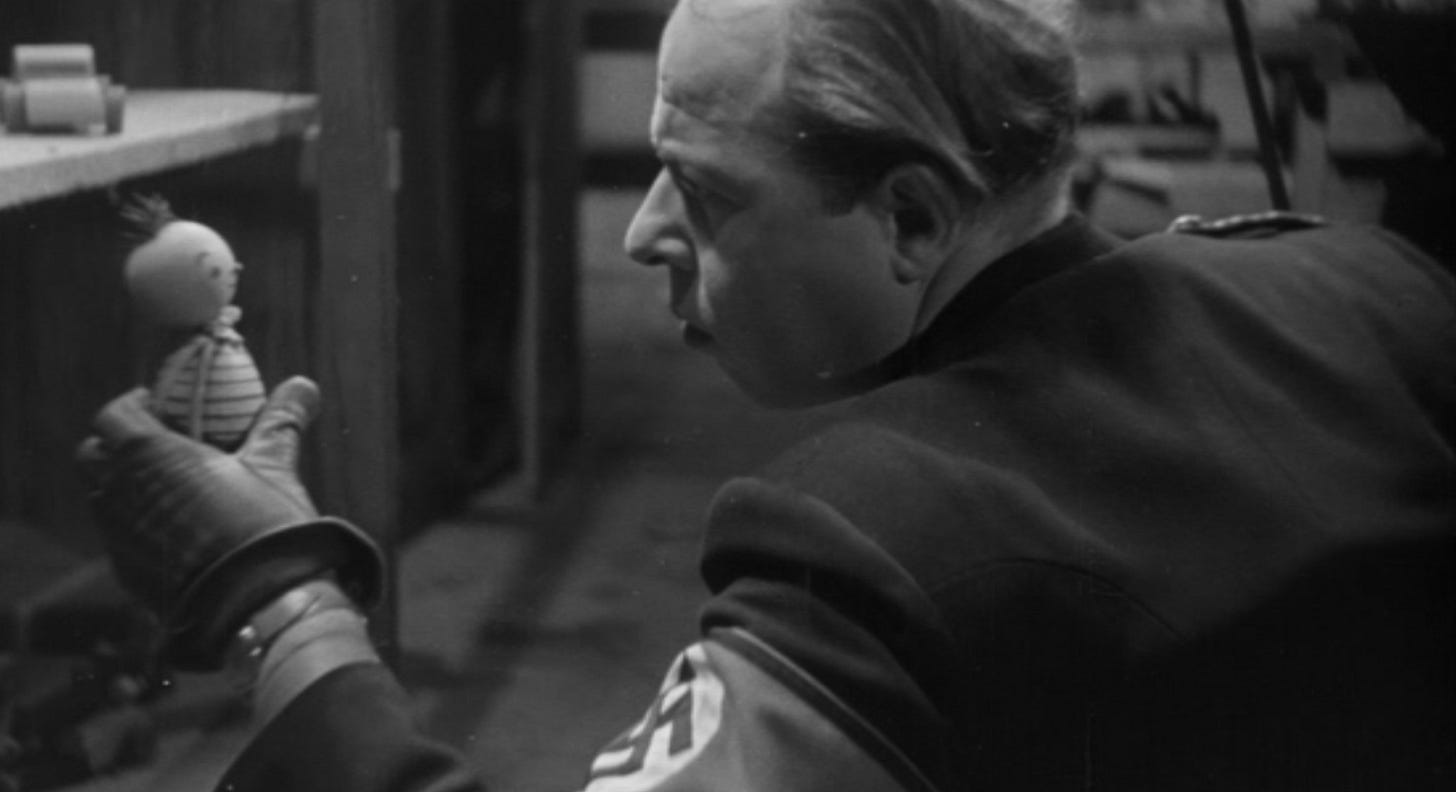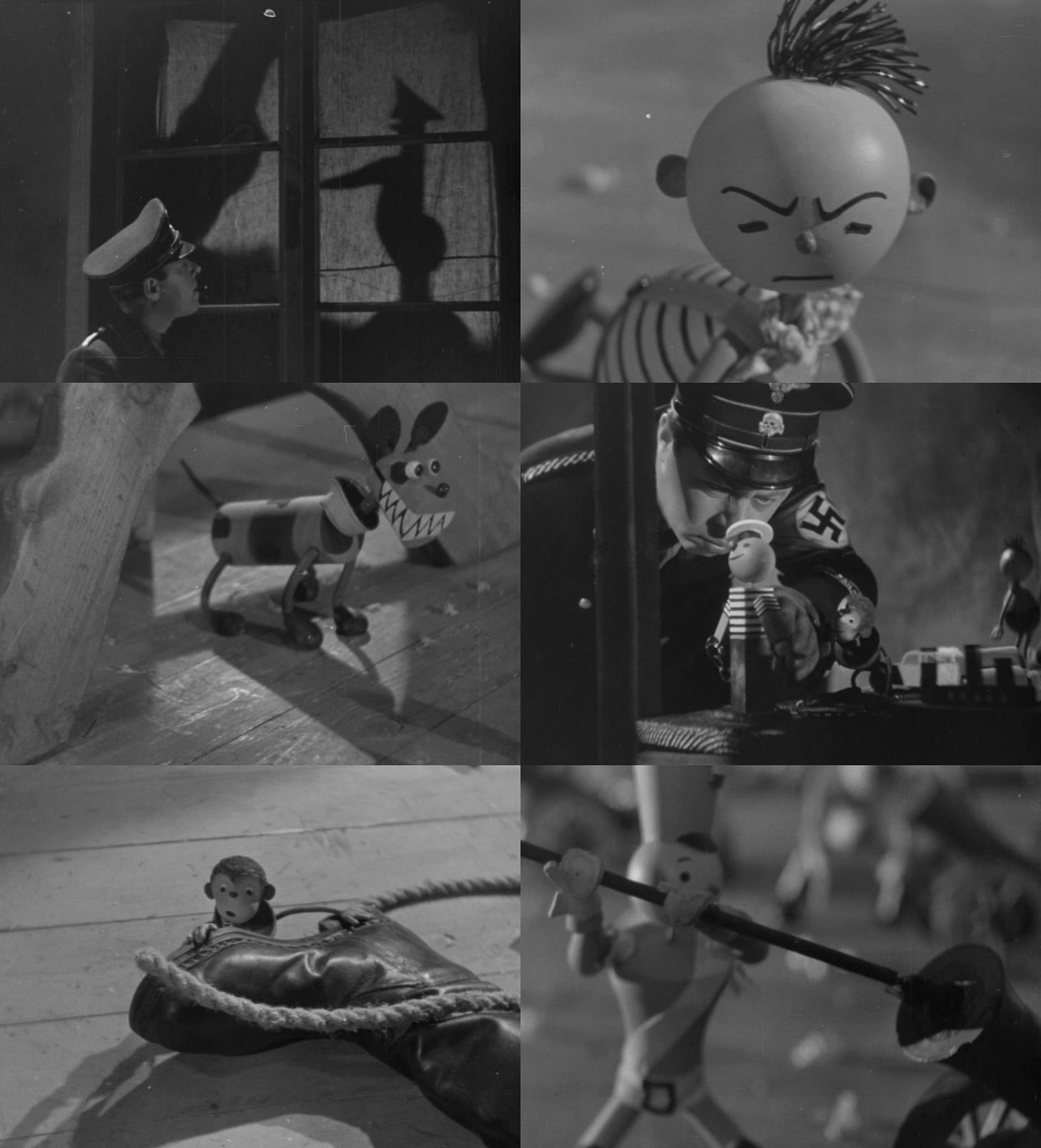Welcome! It’s another issue of the Animation Obsessive newsletter — and this one takes us back to the aftermath of World War II.
The year was 1947. The location: Czechoslovakia. A great animator named Hermína Týrlová put out a film, The Revolt of the Toys, to sensational response. There were rave reviews, prizes in Venice and Brussels, screenings as far away as America. Týrlová had animated things in obscurity for decades. Now, she was a hero of the medium.1
It’s hard to overstate how much changed for her. A few years earlier, Týrlová had lived under the Nazi occupation — and worked in the captured Czech film industry.
According to one report, Hitler’s regime viewed Prague as a potential “film center for the Third Reich.” Some Czech animators were put to work for a boorish Austrian who imagined himself a cross “between a European Disney and Richard Wagner.” Týrlová had to correct newsreels for the Nazis.2
This made the theme of The Revolt of the Toys painfully relevant. The film begins when a Gestapo officer ransacks a toymaker’s workshop. He tosses, kicks and crushes the toys inside almost absent-mindedly. But they come to life — and push back. When the Nazi sets fire to their cabinet-safehouse, toy firefighters arrive to save the day. And a miniature army rises up to drive the Nazi out.
Especially at the time, this film was a powerful celebration of hope. In the words of a Czech writer, Revolt was a story in which the “greatest evil that humanity has ever known — fascism — was overcome by children’s toys.”3
Keep reading with a 7-day free trial
Subscribe to Animation Obsessive to keep reading this post and get 7 days of free access to the full post archives.




